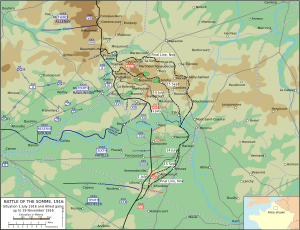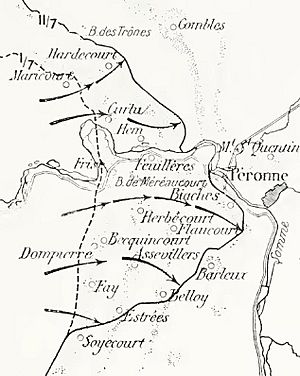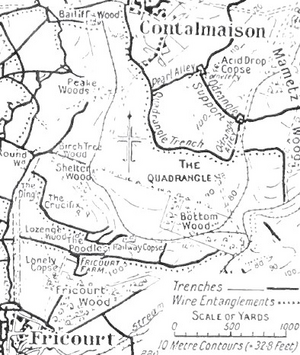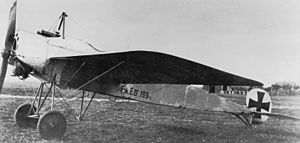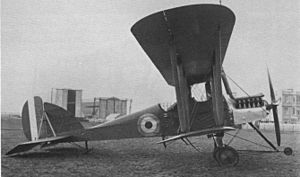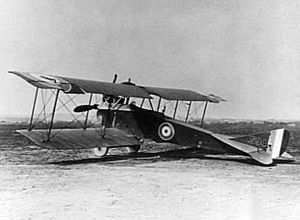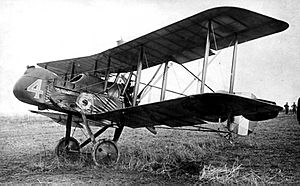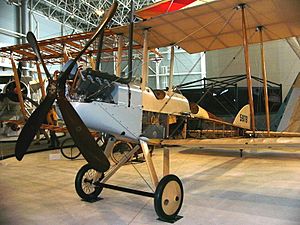Battle of Albert (1916) facts for kids
Quick facts for kids Battle of Albert (1916) |
|||||||
|---|---|---|---|---|---|---|---|
| Part of the Battle of the Somme | |||||||
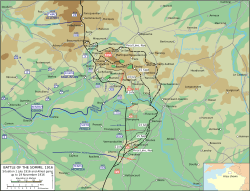 |
|||||||
|
|||||||
| Belligerents | |||||||
|
|
|||||||
| Commanders and leaders | |||||||
| Joseph Joffre Douglas Haig Ferdinand Foch Henry Rawlinson Marie Émile Fayolle Hubert Gough Edmund Allenby |
Erich von Falkenhayn Fritz von Below Fritz von Loßberg Günther von Pannewitz |
||||||
| Strength | |||||||
| 13 British divisions 11 French divisions |
6 divisions | ||||||
| Casualties and losses | |||||||
| British, 1 July: 57,470 2–13 July: 25,000 French, 1 July: 1,590 2–21 July: 17,600 |
1 July: 10,200 1–10 July: 40,187–46,315 |
||||||
The Battle of Albert (July 1–13, 1916) was the first part of a big attack by British and French armies during the Battle of the Somme in World War I. It started with a huge artillery bombardment on June 24, 1916. Then, on July 1, British and French soldiers attacked German lines.
The French army and part of the British army did well in the south, pushing back the German 2nd Army. However, the British attack in the north was a disaster. On the first day alone, about 57,000 British soldiers were killed, wounded, or went missing. This was the highest number of casualties for the British army in a single day.
After this, the British and French focused their attacks in the south. They slowly pushed forward, getting closer to the German second line of defense. The fighting was very tough, with both sides suffering many losses. This battle was a key part of the larger Battle of the Somme, which aimed to relieve pressure on the French army fighting at Verdun.
Why Did the Battle of Albert Happen?
The Big Picture: War in 1916
In 1916, Germany's top general, Erich von Falkenhayn, wanted to break the alliance between Britain and France. He planned to attack Verdun, a very important French city. His idea was to make the French fight hard and lose many soldiers. This would force the British to attack elsewhere to help their allies, and they would also suffer heavy losses. Falkenhayn hoped these defeats would make the Allies give up.
However, the battle at Verdun lasted much longer and cost more lives than Germany expected. This weakened Germany's army. Meanwhile, Russia launched a big attack in the east, forcing Germany to send soldiers there. Because of this, Germany couldn't attack the British as planned.
The Allied Plan for the Somme
The British and French had already planned a big attack on the Somme front. This was part of a larger plan with Russia and Italy to attack all at once. But the German attack on Verdun changed everything. France had to send many soldiers to Verdun, so they had fewer for the Somme.
The Somme attack, which was supposed to be a huge blow against Germany, became more about helping France at Verdun. It also aimed to wear down the German army and get into better positions for future attacks.
How Did the Battle Unfold?
The First Day: July 1, 1916
The first day of the Battle of Albert was a mix of success and disaster.
- French Success in the South: The French Sixth Army attacked south of the Somme River. They broke through German lines easily, capturing many prisoners and losing few soldiers.
- British Success in the South: Part of the British army also did well, capturing villages like Montauban and Mametz.
- British Disaster in the North: North of the Albert–Bapaume road, the British attack was terrible. German defenses were very strong, with uncut barbed wire and hidden machine guns. Many British soldiers were killed as they tried to cross "no man's land" (the area between the two armies' trenches).
After the first day, the British had suffered huge losses, especially in the north. The German defenses in the south had collapsed, but they still held strong in the north.
Fighting Continues: July 2–13, 1916
After the first day, the British changed their tactics. Instead of one huge attack, they started using smaller, more focused attacks, similar to the French style. These attacks were supported by lots of artillery.
- Pushing Forward: The British and French continued to push towards the German second line of defense. They captured important areas like La Boisselle, Bernafay Wood, and Caterpillar Wood.
- Tough Battles for Woods and Villages: There was fierce fighting for places like Trônes Wood, Mametz Wood, and Contalmaison. These battles lasted for days, with both sides losing many soldiers.
- German Response: The Germans rushed in new soldiers to defend their lines. They were ordered to hold their ground at all costs, even if it meant heavy losses. This made the fighting even more intense.
- Mud and Rain: Heavy rain turned the battlefield into thick mud, making it very hard for soldiers to move and for supplies to reach the front lines.
Airplanes in the Battle
Airplanes played an important role in the Battle of Albert.
- Spying from the Sky: British and German planes flew over the battlefields to take photos and see what the enemy was doing. They helped spot enemy artillery and troop movements.
- Directing Artillery: Observers in planes and balloons used radios to tell their artillery where to shoot. This helped make the artillery attacks more accurate.
- Bombing Missions: Airplanes also dropped bombs on German railway stations and supply dumps. One British bombing raid on a German train station caused a huge explosion, destroying an ammunition train and causing many casualties.
- Dogfights: British and German fighter planes fought each other in the sky to control the air above the battlefield.
Aftermath
The Battle of Albert ended on July 13, 1916, and was followed by the Battle of Bazentin Ridge. The British and French armies had pushed the Germans back in some areas, but at a very high cost.
- High Casualties: The British suffered about 57,000 casualties on July 1 alone, and another 25,000 by July 13. The French had about 1,590 casualties on July 1 and 17,600 by July 21. German losses were also very high, with about 40,000 to 46,000 casualties by July 10.
- German Pressure: The intense fighting put a lot of pressure on the German army. Their generals were ordered not to give up any ground. This meant soldiers had to fight to the last man, leading to even more losses.
- Impact on Verdun: The Somme offensive did help relieve pressure on the French at Verdun. Germany had to send more troops and artillery to the Somme front, which meant they couldn't continue their attack at Verdun as strongly.
The Battle of Albert showed how difficult and costly trench warfare was. Even small gains in land came with a huge price in human lives.


